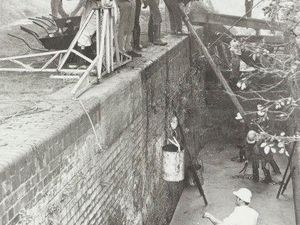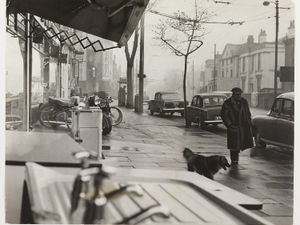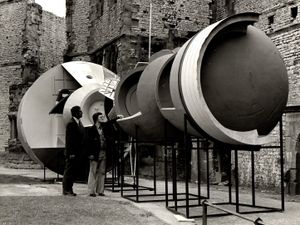Gems of our history that are worth recording
There is history all around us – and now we are being asked to add to a national record of buildings, parks and items that are worth knowing about.
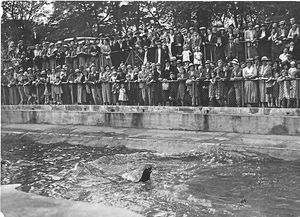
Historic England is appealing for hidden histories to be shared and for overlooked places to be celebrated as part of its Missing Pieces Project.
The heritage body is calling for people to upload to its website photos or stories about any of the more than 400,000 places on the National Heritage List for England.
Submissions by users, intended to give people a fuller picture of historic locations, will be added to the list entry for the place that is being celebrated.
List entries have three tabs – an overview, an official list entry, and a third tab for comments and photos.
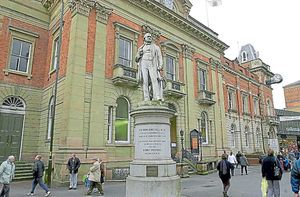
Everyone looking at that list entry can see other people’s additions, such as information, drawings, an audio clip of memories, a film clip, a scan of a document or more.
The chances are that there will be something on the list very close to where you live. Everything from grand mansions all the way down to mile posts and old sewage pumping stations are included because they have historic value.
Some of the historic gems on our doorstep:
Sea lion pools at Dudley Zoo, The Broadway, Dudley
The Dudley Arms Hotel, Wolverhampton Road, Himley
Jehovahs Witness Hall, Castle Hill, Dudley
Royal Wolverhampton School, Wolverhampton
Spon Lane Locks, Birmingham Canal, Wolverhampton
Sewer ventilation pipe, Birmingham Road, Wolverhampton
Goldthorn Hill pumping station, Goldthorn Hill, Wolverhampton
Manager’s House, West Bromwich Manor House
The Clock, Dartmouth Square, West Bromwich
Beeches Road School, West Bromwich
Telephone kiosks, High Street, West Bromwich
The Boat House, Walsall Arboretum
Walsall Drill Hall, Walsall Wood Road, Aldridge
Congregational Chapel, Stafford Road, Cannock
The Boat Inn, Cannock Road, Penkridge
Milepost on Newport Road, near Stafford
Lichfield War Memorial, Lichfield
Statue of Sir Rowland Hill, Kidderminster
Rachel Prothero, of Historic England, said: “The Missing Pieces Project is a great way for people to get out and about and discover the historic places where they live, work or visit. There’s a fascinating range of places on the National Heritage List for England and we’re learning about these special spaces every day. Across the West Midlands, Shropshire and Staffordshire there is a huge amount of history, especially with the role the region played in the Industrial Revolution.
“We’re looking forward to seeing the memories, photos and gems of information that celebrate the places that people love, and, together, discovering more about them.”
Comedian Angela Barnes, who appears in a video to mark the Missing Pieces Project, has added to the listing for the Grade II* listed Meeting House at the University of Sussex in Brighton.
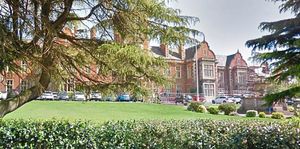
The Brutalist building, designed by Sir Basil Spence, holds special memories for her as a student and first-time voter, and was the venue for her wedding.
“I’m a fan of Brutalist architecture,” she said. “I even chose it as my specialist subject on Celebrity Mastermind. You can’t look at a space like this and not think that it’s beautiful.”
Rhiane Fatinikun, founder of the Black Girls Hike group, which provides a safe space for black women to explore the outdoors, added to the list entry for Grade II protected Heaton Park in Manchester. She said: “A park is really the heart of the community because for a lot of people it’s their only opportunity to get outside and it’s the only green space that they have. A lot of people probably don’t realise that there’s so many important and significant things that are actually on their doorstep with loads of history to them.”
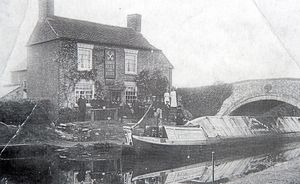
History PhD student Patrick Hegarty Morrish, who also appeared in the video about the Missing Pieces Project, has added details of London’s Grade II listed Alexandra Palace. He said: “It was used in World War One as a camp for German and Austrian internees. The Internee Orchestra is perhaps the most interesting part of the place. It was founded in 1915, I believe, so a year into the war, and included, at its peak, nearly 40-something musicians. We’ve all got different stories to tell about places and they’re all an important part of the picture.”
Places on the National Heritage list for England can be searched for at historicengland.org.uk/listing/the-list
You can also add your entry on another part of the site.

